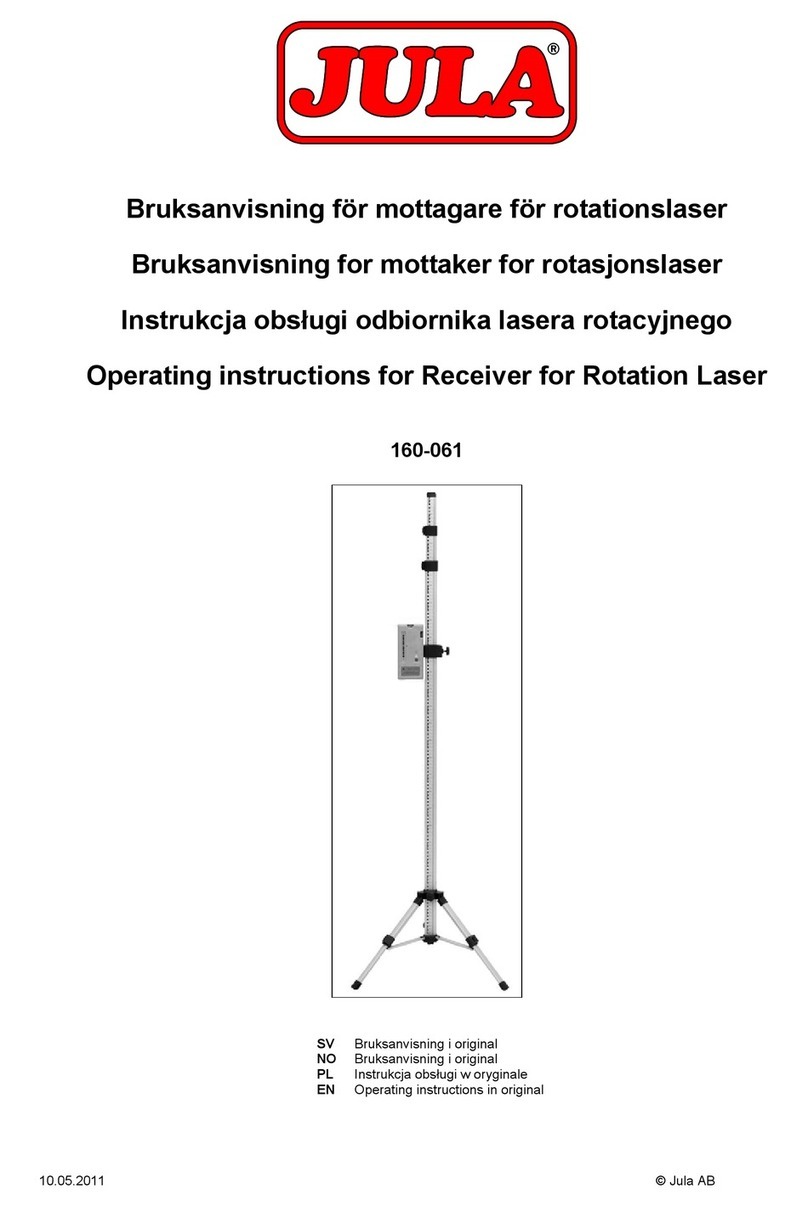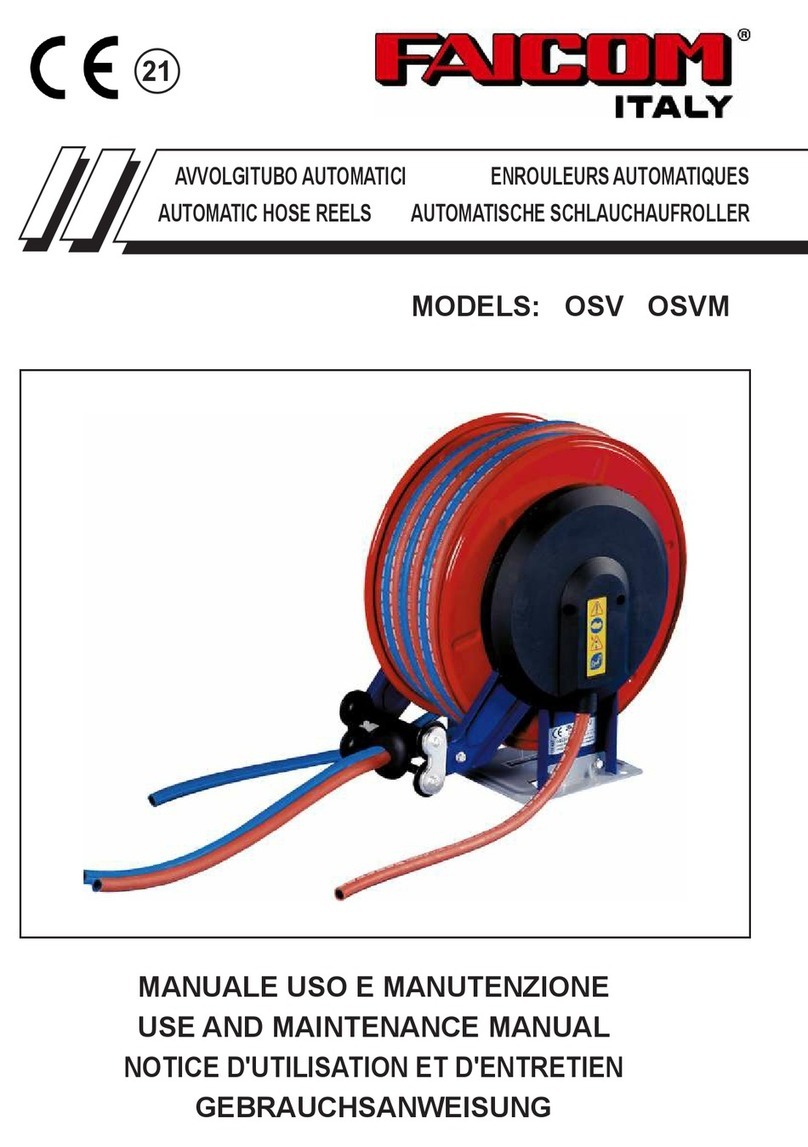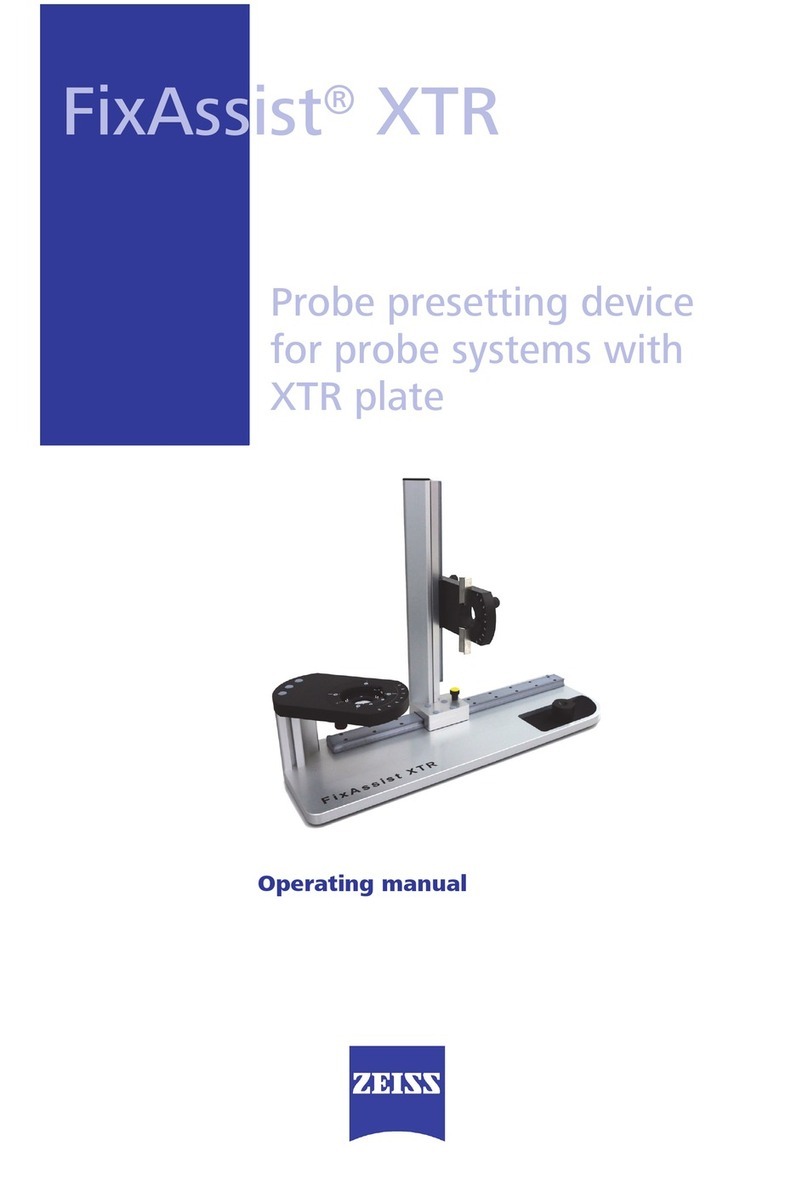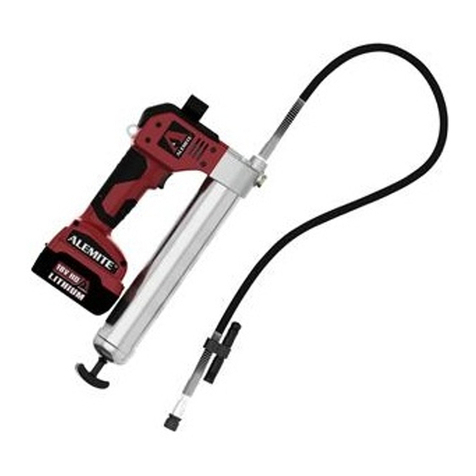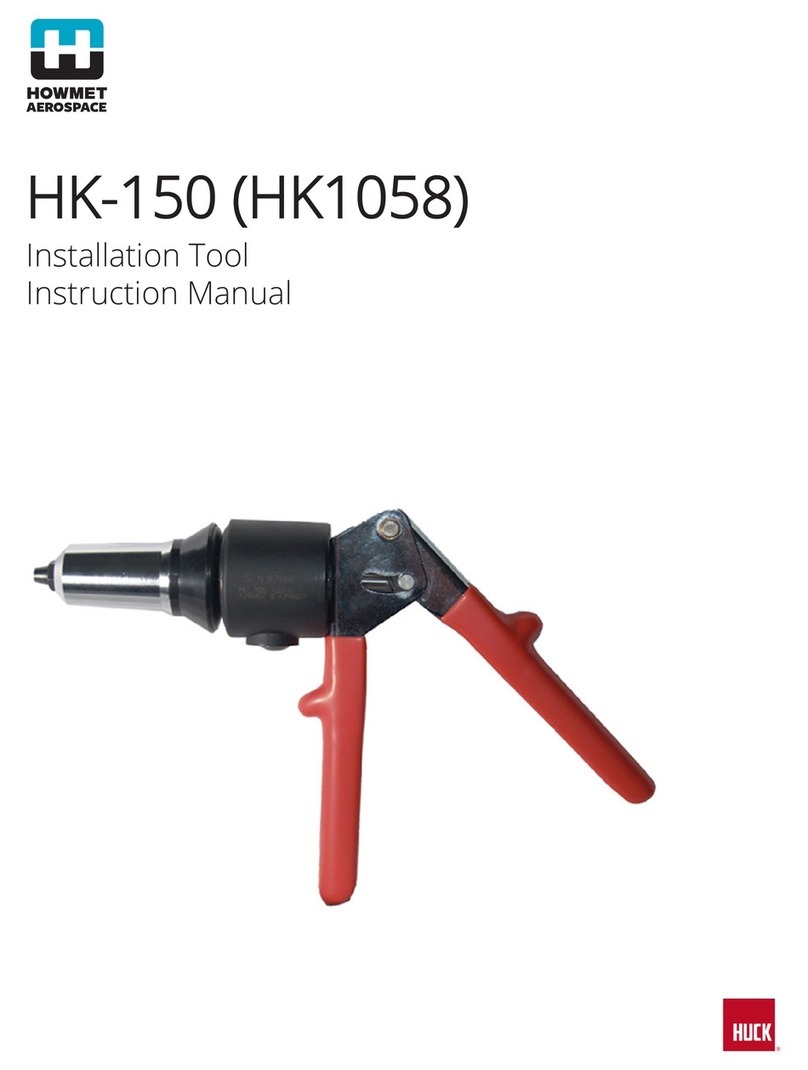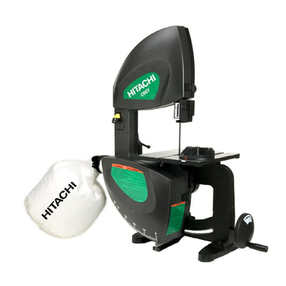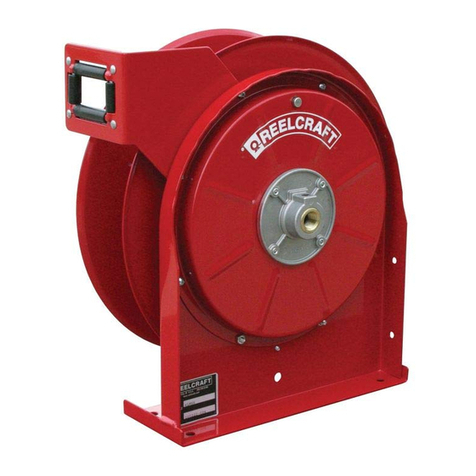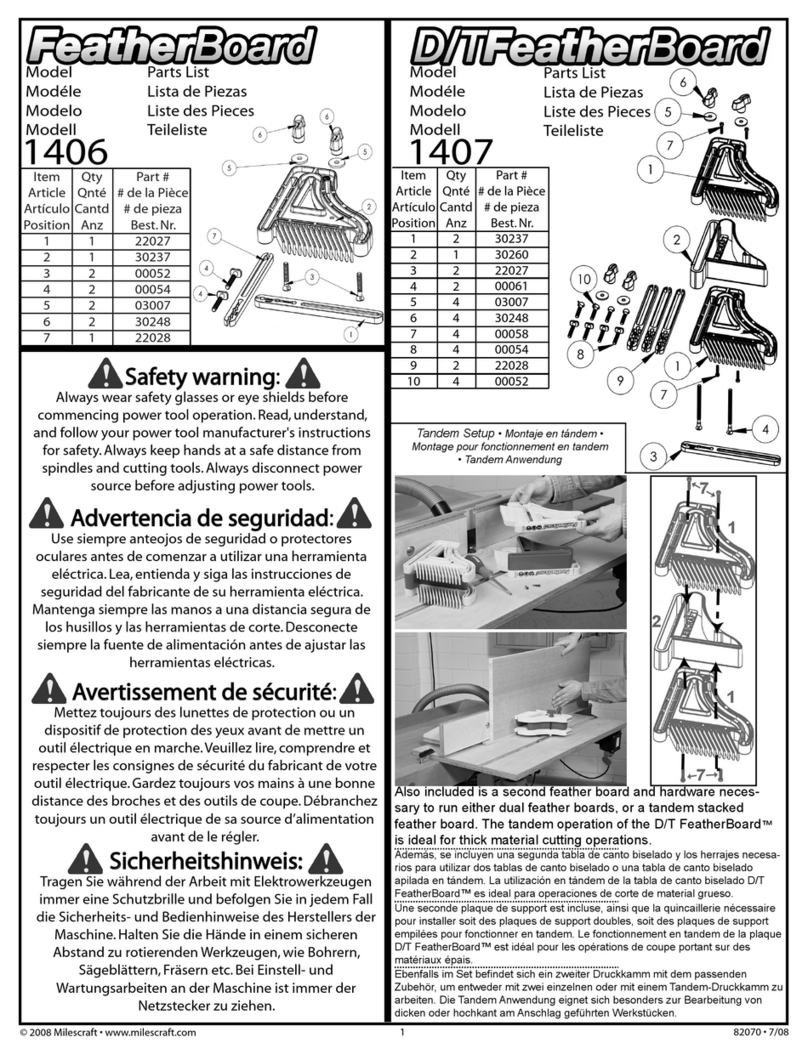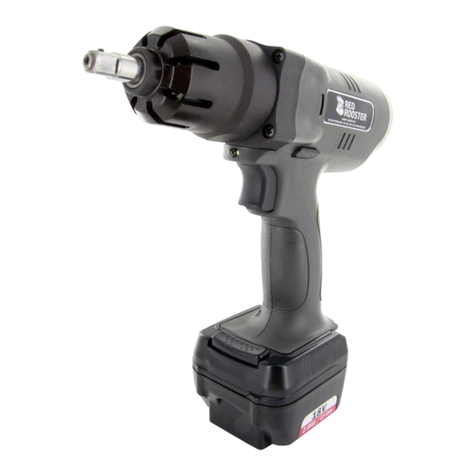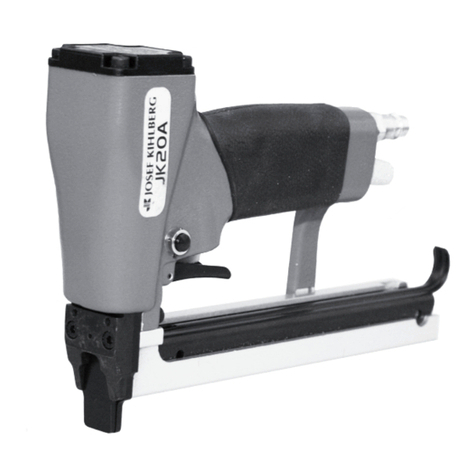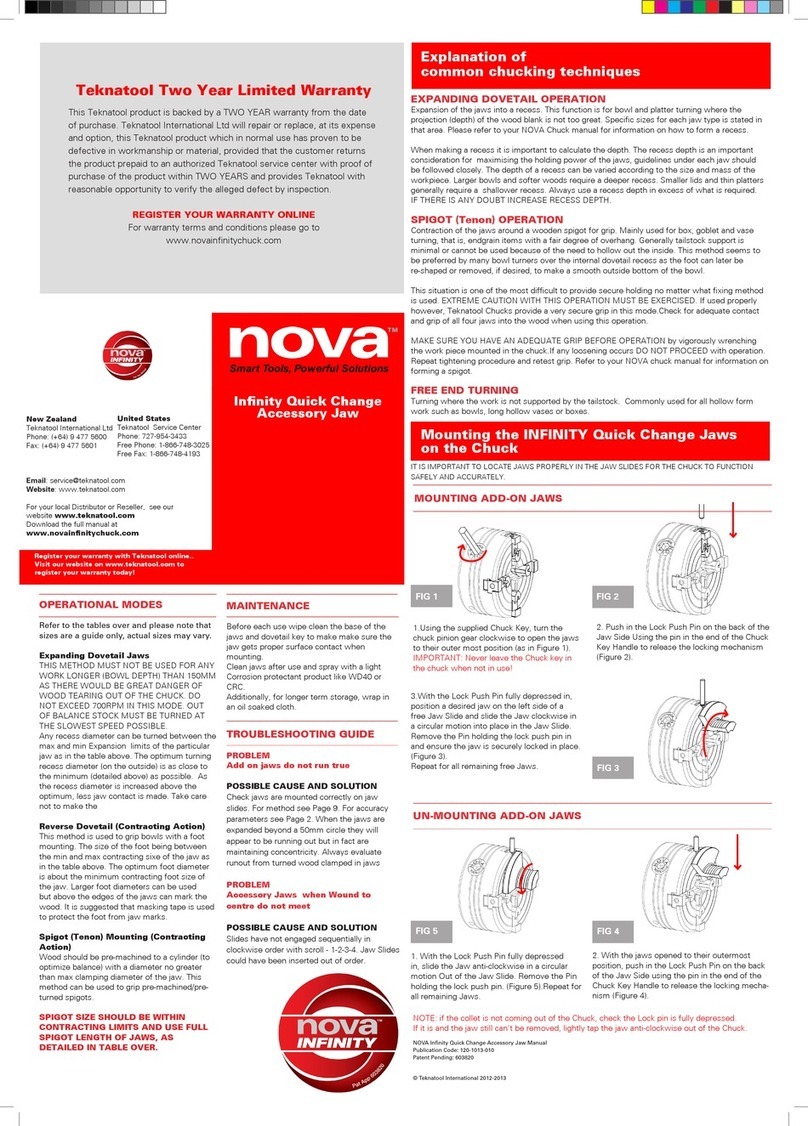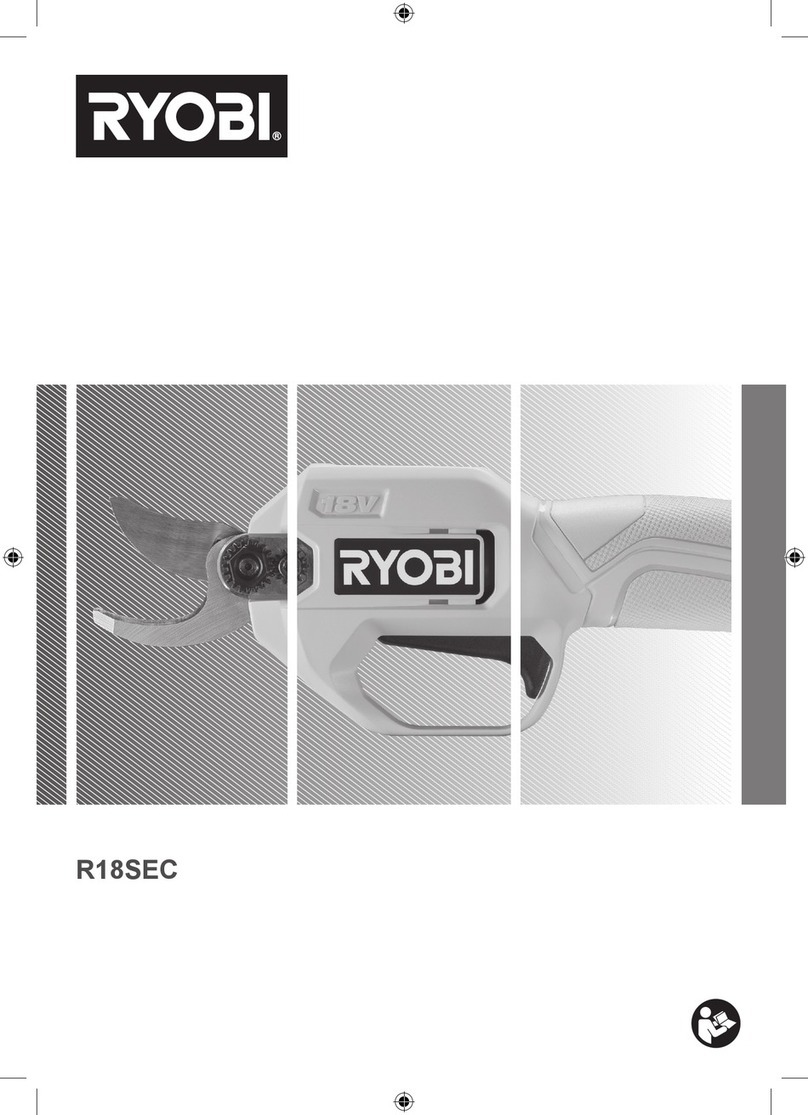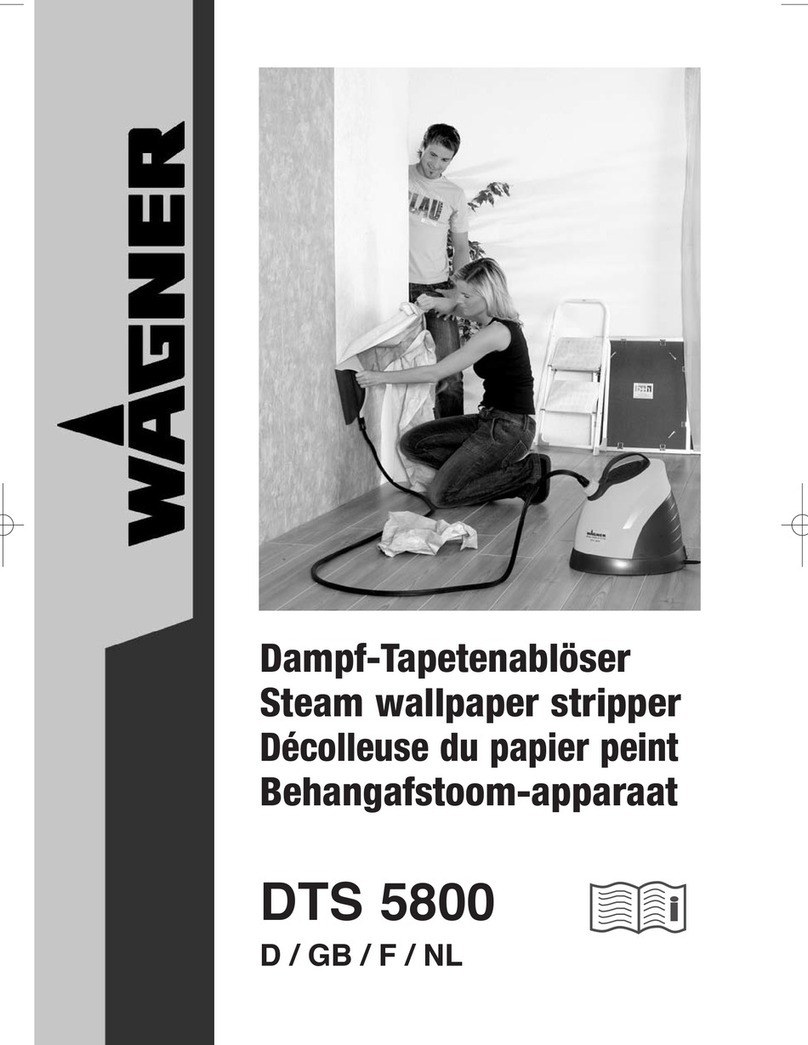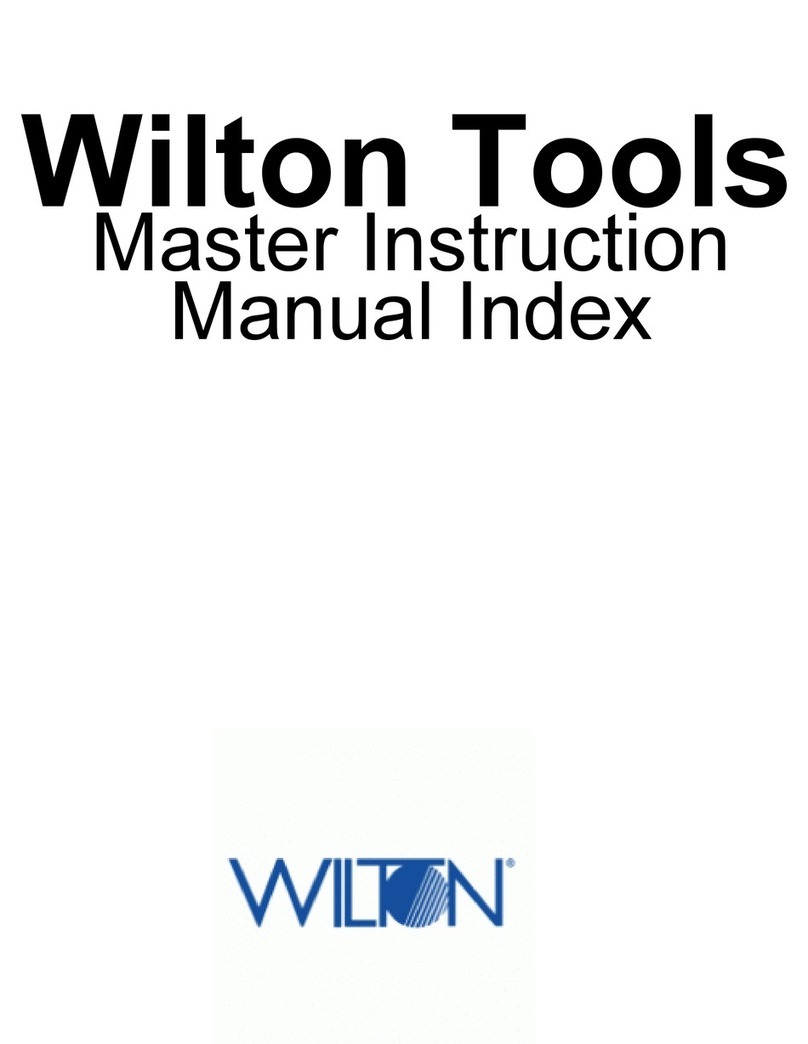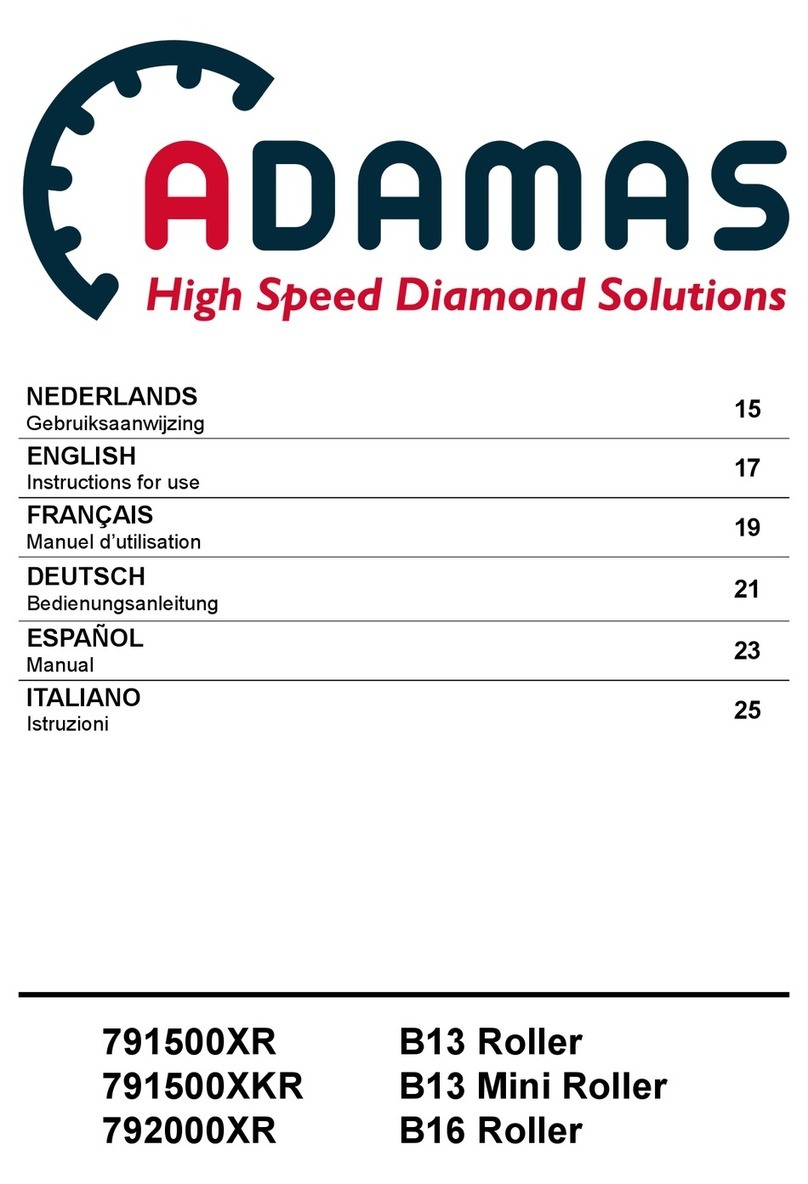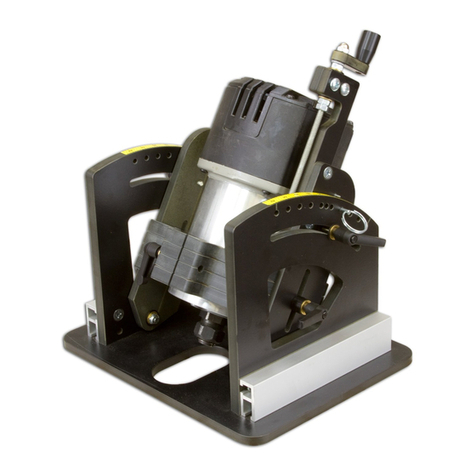Feider Machines FMT20V-A User manual

ORIGINAL INSTRUCTIONS >EN
CORDLESS MULTI-TOOL
FMT20V-A
USER GUIDE
CAUTION: Read this manual before use this machine!

CONTENTS
1. INTENDED USE 3
2. SAFETY INSTRUCTIONS 3
3. YOUR PRODUCT 7
4. PACKAGE CONTENT LIST 8
5. ASSEMBLY 8
6. OPERATION 9
7. CLEANING , MAINTENANCE AND STORAGE 11
8. TECHNICAL DETAILS 12
9. DISPOSAL 13
12. PRODUCT FAILURE 15
13. WARRANTY EXCLUSIONS 16
10. DECLARATION OF CONFORMITY 13
11. WARRANTY 14

1. INTENDED USE
This multi-function tool is intended for sanding, cutting and scraping on wood, plastic, gypsum and metal. It
is designed for domestic use and is not designed for commercial, trade or industrial use.
WARNING! For your own safety, read this manual and the general safety instructions carefully
before using the appliance. Your power tool should only be given to other users together with
these instructions.
2. SAFETY INSTRUCTIONS
2.1 GENERAL POWER TOOL SAFETY WARNINGS
WARNING Read all safety warnings, instructions, illustrations and specifications provided with
this power tool. Failure to follow all instructions listed below may result in electric shock, fire and/or serious
injury.
Save all warnings and instructions for future reference.
The term "power tool" in the warnings refers to your mains-operated (corded) power tool or battery-operated
(cordless) power tool.
1) Work area safety
a) Keep work area clean and well lit. Cluttered or dark areas invite accidents.
b) Do not operate power tools in explosive atmospheres, such as in the presence of flammable
liquids, gases or dust. Power tools create sparks which may ignite the dust or fumes.
c) Keep children and bystanders away while operating a power tool. Distractions can cause you to lose
control.
2) Electrical safety
a) Power tool plugs must match the outlet. Never modify the plug in any way. Do not use any adapter
plugs with earthed (grounded) power tools. Unmodified plugs and matching outlets will reduce risk of
electric shock.
b) Avoid body contact with earthed or grounded surfaces, such as pipes, radiators, ranges and
refrigerators. There is an increased risk of electric shock if your body is earthed or grounded.
c) Do not expose power tools to rain or wet conditions. Water entering a power tool will increase the risk
of electric shock.
d) Do not abuse the cord. Never use the cord for carrying, pulling or unplugging the power tool.
Keep cord away from heat, oil, sharp edges or moving parts. Damaged or entangled cords increase
the risk of electric shock.
e) When operating a power tool outdoors, use an extension cord suitable for outdoor use. Use of a
cord suitable for outdoor use reduces the risk of electric shock.
f) If operating a power tool in a damp location is unavoidable, use a residual current device (RCD)
protected supply. Use of an RCD reduces the risk of electric shock.
3) Personal safety
a) Stay alert, watch what you are doing and use common sense when operating a power tool. Do not
use a power tool while you are tired or under the influence of drugs, alcohol or medication. A
moment of inattention while operating power tools may result in serious personal injury.

b) Use personal protective equipment. Always wear eye protection. Protective equipment such as a
dust mask, non-skid safety shoes, hard hat or hearing protection used for appropriate conditions will
reduce personal injuries.
c) Prevent unintentional starting. Ensure the switch is in the off-position before connecting to power
source and/or battery pack, picking up or carrying the tool. Carrying power tools with your finger on
the switch or energising power tools that have the switch on invites accidents.
d) Remove any adjusting key or wrench before turning the power tool on. A wrench or a key left
attached to a rotating part of the power tool may result in personal injury.
e) Do not overreach. Keep proper footing and balance at all times. This enables better control of the
power tool in unexpected situations.
f) Dress properly. Do not wear loose clothing or jewellery. Keep your hair and clothing away from
moving parts. Loose clothes, jewellery or long hair can be caught in moving parts.
g) If devices are provided for the connection of dust extraction and collection facilities, ensure these
are connected and properly used. Use of dust collection can reduce dust-related hazards.
h) Do not let familiarity gained from frequent use of tools allow you to become complacent and
ignore tool safety principles. A careless action can cause severe injury within a fraction of a second.
4) Power tool use and care
a) Do not force the power tool. Use the correct power tool for your application. The correct power tool
will do the job better and safer at the rate for which it was designed.
b) Do not use the power tool if the switch does not turn it on and off. Any power tool that cannot be
controlled with the switch is dangerous and must be repaired.
c) Disconnect the plug from the power source and/or remove the battery pack, if detachable, from
the power tool before making any adjustments, changing accessories, or storing power tools.
Such preventive safety measures reduce the risk of starting the power tool accidentally.
d) Store idle power tools out of the reach of children and do not allow persons unfamiliar with the
power tool or these instructions to operate the power tool. Power tools are dangerous in the hands of
untrained users.
e) Maintain power tools and accessories. Check for misalignment or binding of moving parts,
breakage of parts and any other condition that may affect the power tool’s operation. If damaged,
have the power tool repaired before use. Many accidents are caused by poorly maintained power tools.
f) Keep cutting tools sharp and clean. Properly maintained cutting tools with sharp cutting edges are less
likely to bind and are easier to control.
g) Use the power tool, accessories and tool bits etc. in accordance with these instructions, taking
into account the working conditions and the work to be performed. Use of the power tool for
operations different from those intended could result in a hazardous situation.
h) Keep handles and grasping surfaces dry, clean and free from oil and grease. Slippery handles and
grasping surfaces do not allow for safe handling and control of the tool in unexpected situations.
5) Battery tool use and care
a) Recharge only with the charger specified by the manufacturer. A charger that is suitable for one type
of battery pack may create a risk of fire when used with another battery pack.
b) Use power tools only with specifically designated battery packs. Use of any other battery packs may
create a risk of injury and fire.

c) When battery pack is not in use, keep it away from other metal objects, like paper clips, coins,
keys, nails, screws or other small metal objects, that can make a connection from one terminal to
another. Shorting the battery terminals together may cause burns or a fire.
d) Under abusive conditions, liquid may be ejected from the battery; avoid contact. If contact
accidentally occurs, flush with water. If liquid contacts eyes, additionally seek medical help. Liquid
ejected from the battery may cause irritation or burns.
e) Do not use a battery pack or tool that is damaged or modified. Damaged or modified batteries may
exhibit unpredictable behaviour resulting in fire, explosion or risk of injury.
f) Do not expose a battery pack or tool to fire or excessive temperature. Exposure to fire or temperature
above 130 °C may cause explosion.
NOTE The temperature „130 °C“ can be replaced by the temperature „265 °F“.
g) Follow all charging instructions and do not charge the battery pack or tool outside the
temperature range specified in the instructions. Charging improperly or at temperatures outside the
specified range may damage the battery and increase the risk of fire.
6) Service
a) Have your power tool serviced by a qualified repair person using only identical replacement parts.
This will ensure that the safety of the power tool is maintained.
b) Never service damaged battery packs. Service of battery packs should only be performed by the
manufacturer or authorized service providers.
2.2 MULTI-FUNCTION TOOL SAFETY WARNINGS
a) Use damps or another practical way to secure and support the workplace. Holding the workpiece by
hand or against your body leaves it unstable and may lead to loss of control.
b) Make sure the multi-function tool Is not contacting the workplace before the switch is turned on.
c) Keep hands away from moving parts.
d) Do not leave th. multi-function tool running. Operate the multi-function tool only when it is hand-held.
e) Do not touch the blades or scraper etc. or the workplace Immediately after operation, they may be
extremely hot.
f) Some material contains chemicals which may be toxic. Take caution to prevent dust inhalation and
skin contact.
g) The multi-function tool Is not waterproof, do not use water on the workpiece surface.
h) Use this multi-function tool to sand products, paints and wood could expose user to dust
containing hazardous substances. Use appropriate respiratory protection.
i) Keep bystanders a safe distance away froni the work area. Anyone entering the work area must
wear personal protective equipment. Fragments of workpiece or of a broken accessory may fly away
and cause injury.
j) Do not operate the multi-function tool near flammable materials. Sparks may ignite these materials.
2.3 RESIDUAL RISKS
Additional sdua risks may arise when using the tool which may not be included in the safety warnings. These
risks can arise from misuse, prolonged use etc.
Even with the application of the relevant safety regulations and the implementation of safety devices, certain
residual risks cannot be avoided, These included:

Injuries caused by touching any rotating/moving parts.
Injuries caused when changing any parts, blades or accessories,
Injuries caused by prolonged use of a tool. When using any tool for prolonged periods ensure you take
regular breaks.
Impairment of hearing.
Health hazards caused by breathing dust developed when using your tool (example: working with wood,
especially oak, beech and MDF.)
2.4 SAFETY INSTRUCTIONS FOR BATTERIES AND CHARGER
Batteries
Never attempt to open for any reason.
Do not store in locations where the temperature may exceed 40°C (104°F).
Charge only at ambient temperatures between 4°C and 40°C (39.2°F and 104°F).
Charge only using the charger provided with the tool.
Store your batteries in a cool dry place (5°C-20°C/41°F-68°F). Never store batteries in discharged state.
It is better for Li-ion batteries to discharge and reload them regularly (at least 4 times a year). The
ideal charge for long-term storage of your Li-ion battery is 40% of capacity.
When disposing of batteries, follow the instructions given in the section “Protecting the environment”.
Do not cause short circuits. If connection is made between the positive (+) and negative (-) terminal
directly or via accidental contact with metallic objects, the battery is short circuited and an intense
current will flow causing heat generation which may lead to casing rupture or fire.
Do not heat. If batteries are heated to above 100°C (212°F), sealing and insulating separators and
other polymer components may be damaged resulting in electrolyte leakage and/or internal short
circuiting leading to heat generation causing rupture or file. Moreover do not dispose of the batteries
in fire, explosion and/or intense burning may result.
Under extreme conditions, battery leakage may occur. When you notice liquid on the battery,
proceed as follows:
Carefully wipe the liquid off using a cloth. Avoid skin contact.
In case of skin or eye contact, follow the instructions below:
•Immediately rinse with water. Neutralize with a mild acid such as lemon juice or
vinegar.
•In case of eye contact, rinse abundantly with clean water for at least 10 minutes.
Consult a physician.
Fire hazard! Avoid short-circuiting the contacts of a detached battery. Do not incinerate
the battery.
Charger
Only use the model of charger recommended. See
the technical data".

2.5 SYMBOLS
Conforms to relevant safety standards
To reduce the risk of injury, the user must read and understand this manual
before using this product.
Wear eye protection.
Wear breathing protection.
Wear hearing protection
Do not dispose of old appliances with domestic rubbish
3. YOUR PRODUCT
1. Accessory locking lever
2. On/off switch
3. Handle
4. Battery (not included)
5. Variable speed dial
6. Accessory drive spindle
7. LED worklight
8. Sanding pad
9. Sand paper
10. Metal plunge blade
11. Scraper

4. PACKAGE CONTENT LIST
Remove all packaging materials.
Remove remaining packaging and packing inserts (if included).
Check that the package contents are complete.
Check the appliance, the power cord, the power plug of charger and all accessories for transportation
damage or not.
Keep the packaging materials as far as possible until the end of the warranty period. Then take it to your
local waste disposal system.
WARNING! Packaging materials are not toys! Children must not play with plastic bags! There
is a danger of suffocation!
1 x mutil-tool
1x Metal plunge blade
1x Scraper
1x Sanding pad
1x.Sand paper
1 x instruction manual
Note: If any parts are missing or damaged, please contact your dealer.
5. ASSEMBLY
WARNING: Ensure the multi-function tool is switched off and the battery Is removed before
attaching the accessories.
5.1 ATTACHING ACCESSORIES (FIG. 1)
a) Lift up the accessory locking lever (1).
b) Attached the accessory to the accessory drive spindle (6). Fig. 1
c) Lowe down the accessory locking lever (1).
5.2 FITTING SAND PAPER
a) The sanding pad (8) must first be fitted to the spindle following the instruction above.
b) The sanding pad (8) is equipped with a hook and loop pad.
c) Press the sand paper (9) onto the sanding pad by aligning the edges and holes.
d) To remove, peel away from the sanding pad (8) from an edge.

6. OPERATION
6.1 CHARGING THE BATTERY PACK
NOTE: The battery and charger not delivered in package, you can buy Buider battery platform 1
which used for full range.
1). Take the battery pack out of the equipment. Do this by pressing the side pushlock buttons.
2). Check that your mains voltage is the same as that marked on the rating plate of the battery charger.
Insert the power plug of the charger into the socket outlet. The RED LED will then begin to light.
3). Insert the battery pack into the battery charger .then the red LED on charger will begin to Green flash
light.
4). You will find a label with “Charger indicator” of the LED indicator on the charger.
The battery pack can become a little warm during the charging. This is normal.
If the battery pack fails to charge, check:
Voltage at the power socket
Whether there is good contact at the charging contacts.
Whether the battery pack is warm or not, The battery protection system will not allow the battery to be
charged if the battery temperature is over 40℃after use, allow the battery pack to cool to room
temperature before commencing with the charging.
If the battery pack still fails to charge, send the charging unit and the battery pack to our customer service
center.
To ensure that the battery pack provides long service, you should take care to recharge it promptly. You must
recharge the battery pack when you notice that the power of the cordless vacuum drops. Never allow the
battery pack to become fully discharged. This will cause it to develop a defect.
Battery capacity indicator
Press the switch for the battery capacity indicator . The battery capacity indicator shows the charge status of
the battery using 4 LEDs as following:
All 4 LEDs are lit:
The battery is fully charged.
3 LED(s) are lit:
The battery has approx 75% remaining charge.
2 LED(s) are lit:
The battery has approx 50% remaining charge.
1 LED is lit:
The battery will be empty soon, please recharge the battery.
6.2 CHARGER INDICATOR
Indicator status
Explanations and actions
Ready for use
The charger is connected to the mains and is ready for use; there is no battery pack
in the charger.
Charging
The charger is charging the battery pack in charge mode.
Battery pack is full of charge.
Charging is finished and battery pack in the charger.

The temperature of battery is too high or too low, the charger is under protection
status. The charging function can be recovered after the temperature is normal.
Unrecoverable battery malfunction.
6.3 INSERTING AND REMOVING THE BATTERY
WARNING: Before making any adjustments ensure the drill is switchedoff with the direction
of rotation selector in the center position
1. Remove the battery: press the battery release latch in and at the same time pull the battery pack off.
2. To insert the battery, push the battery pack onto the contacts of the tool.
6.4 SWITCHING ON/OFF
a) To switch on the mutil-function tool, press the on/oft switch (2) forward into the on position.
b) To switch off the multi-function tool, press the on/off switch (2) backward into the off position.
6.5 LED WORKLIGHT
a) The LED workiight (7) will turn on when the multi-function tool Is switched on
b) The LED worklight (7) will switch off when the multi-function tool Is switched off.
6.6 VARIABLE SPEED CONTROL (FIG. 2)
a) To increase the speed of the multi-function tool, rotate the variable speed dial (5) to a higher number. The
speed range is 5000-18000 rpm.
b) To decrease the speed of the multi- [unction tool, rotate the variable speed dial (5) to a lower number.
6.7 SANDING
a) Attach the sanding pad (8) and sand paper (9) to the multi-function tool.
b) Ensure the accessory is secure and the sanding pad is secure.
c) Switch on the multi-function tool.
d) Place the multi-function tool flat on the workpiece and move back and forth,
e) Do not apply heavy pressure to the multi-function tool or tilt the sanding pad (8) as this will wear out the
sand paper (9) and may damage the sanding pad.

6.8 SAWING OR CUTTING
a) Attach the blade (10) to the multi-function tool.
b) Ensure the workpiece is securely held down and the plunge blade (10) is secure.
c) Switch on the multi-function tool and use a slight pendulum motion while cutting.
6.9 SCRAPING
a) Attach the scraper (11) to the multi-function tool.
b) Ensure the workpiece is securely held down and the scraper (11) is secure.
c) Switch on the multi-function tool.
d) Hold the multi-function tool at an angle of 10. to 15 to the workpiece.
e) Allow the scraper tow do the work, do not apply heavy pressure to the multi- function tool. This may cause
the multi-function tool to overload or cut Into the surface of the workpiece.
7. CLEANING , MAINTENANCE AND STORAGE
Always disconnect the battery pack from the angle grinder before making any adjustment or
attaching any accessories.
7.1 CLEANING
a) Keep the ventilation slots free from dust and dirt to prevent overheating.
b) Regularly clean the multi-function tool’s accessories and housing with a soft cloth, preferably after each
use. If the dirt does not come off, use a soft cloth moistened with soapy water.
c) Never use solvents such as petrol, alcohol, ammonia water etc. These solvents may damage the plastic
parts.
7.2 MAINTENANCE
a) The multi-function tool has been designed to operate over a long period of time with a minimum of
maintenance. Continuous satisfactory operation depends upon proper care and regular cleaning.
b) The multi-function tool shall only be repaired by an authorised service centre.
8.3 STORAGE
a) Thoroughly clean the multi-function tool and its accessories before storage.
b) Store the multi-function tool out of the reach of children in a stable and secure place.

8. TECHNICAL DATA
Rated voltage (direct current)
20V d.c.
Oscillation
5000-18000/min
Oscillation Angle:
3°
Battery type
Recommendation of battery to use:
Model: FBA20U2 or FBA20U4
20V d.c. 2Ah or 4Ah
Pression acoustique LpA
83dB(A),dB(A), K= 3 dB(A)
Puissance acoustique LwA
94dB(A), K= 3 dB(A)
Ah,AG(Vibrations): ah
4.55m/s2, K: 1,5 m/s2
Information
The declared vibration total value has been measured in accordance with a standard test method
and may be used for comparing one tool with another;
The declared vibration total value may also be used in a preliminary assessment of exposure.
Warning
that the vibration emission during actual use of the power tool can differ from the declared total
value depending on the ways in which the tool is used;
And of the need to identify safety measures to protect the operator that are based on an estimation
of exposure in the actual conditions of use (taking account of all parts of the operating cycle such as
the times when the tool is switched off and when it is running idle in addition to the trigger time).
Wear hearing protection.
10. DISPOSAL
Electrical products should not be discarded with household products. According to the European Directive
2012/19/EU on waste electrical and electronic equipment and its implementation into national law,
electrical products used must be collected separately and disposed of at collection points
provided for this purpose. Talk with your local authorities or dealer for advice on recycling.
Charger type Recommendation of charger to use:
Model: FFC20EU
Input 220-240V~ 50/60Hz,0.6A max
Output 20V d.c., 2A

11. DELARATION OF CONFORMITY
BUILDER SAS
32, rue Aristide Bergès - ZI 31270 Cugnaux - France, declares that,
Product: Angle Grinder 20V
Trade mark: FEIDER
Model: FMT20V-A
Serial number: 20211004969-20211005468
is in conformity with the essential requirements and other relevant provisions of the applicable European
Directives, based on the application of European harmonized standards. Any unauthorized modification of
the apparatus voids this declaration.
European Directives (including, if applicable, their amendments up to the date of signature);
Rohs directive 2011/65/EU + (EU) 2015/863
2014/30/EU; 2006/42/EC
European harmonized standards
EN 62841-1: 2015
EN 62841-2-4:2014
EN55014-1:2017+A11:2020; EN55014-2 :2015
Cugnaux, 06/09/2021
Philippe MARIE / PDG
Responsible of the technical file: Mr Olivier Patriarca

BUILDER SAS
32, rue Aristide Bergès - ZI 31270 Cugnaux - France
MADE IN PRC
Table of contents
